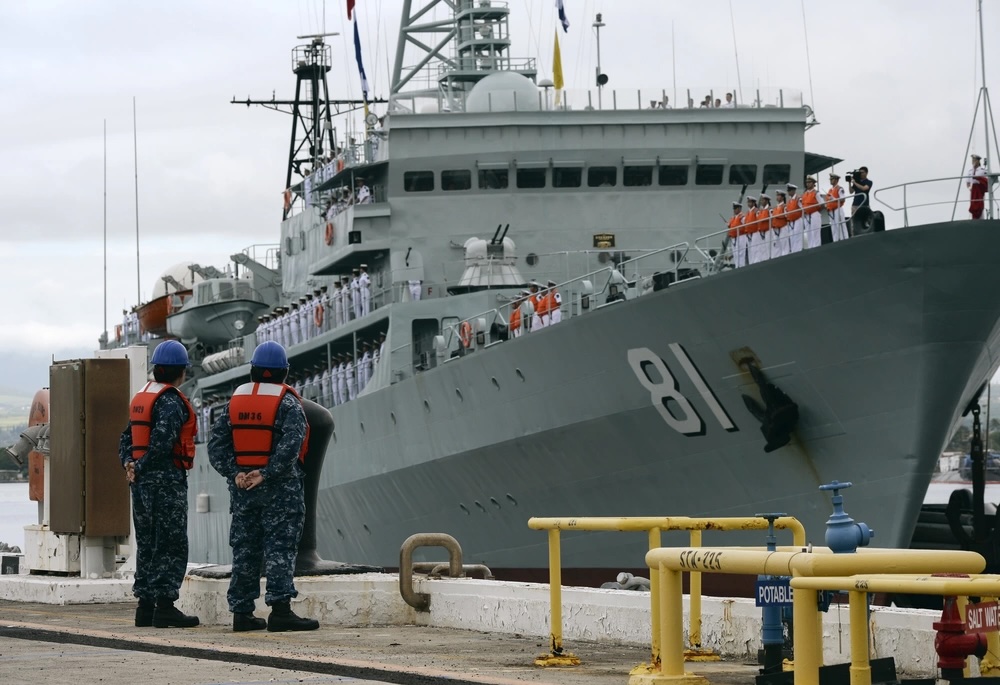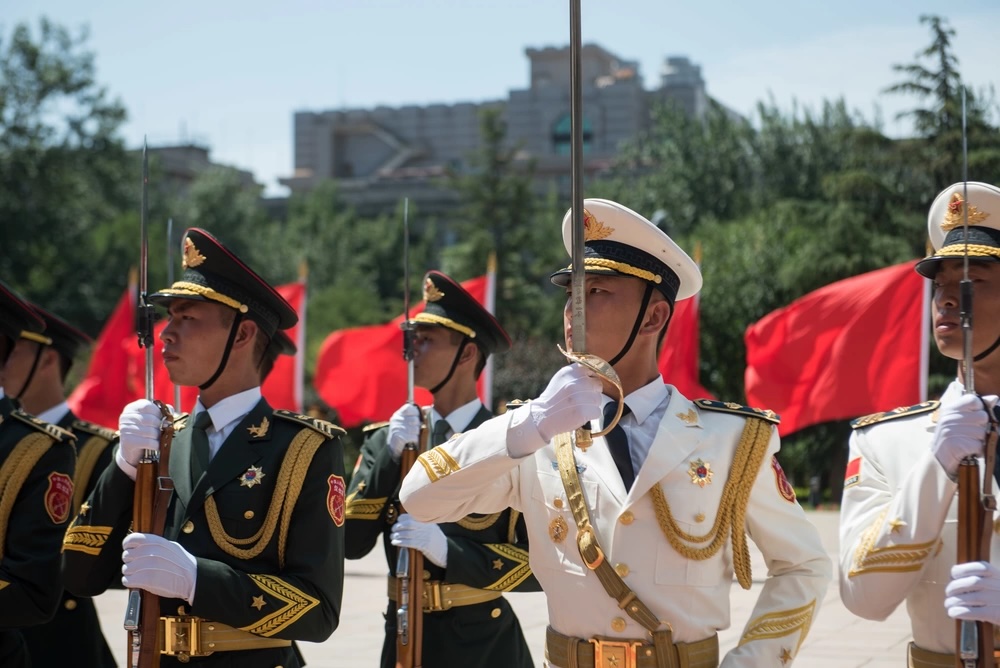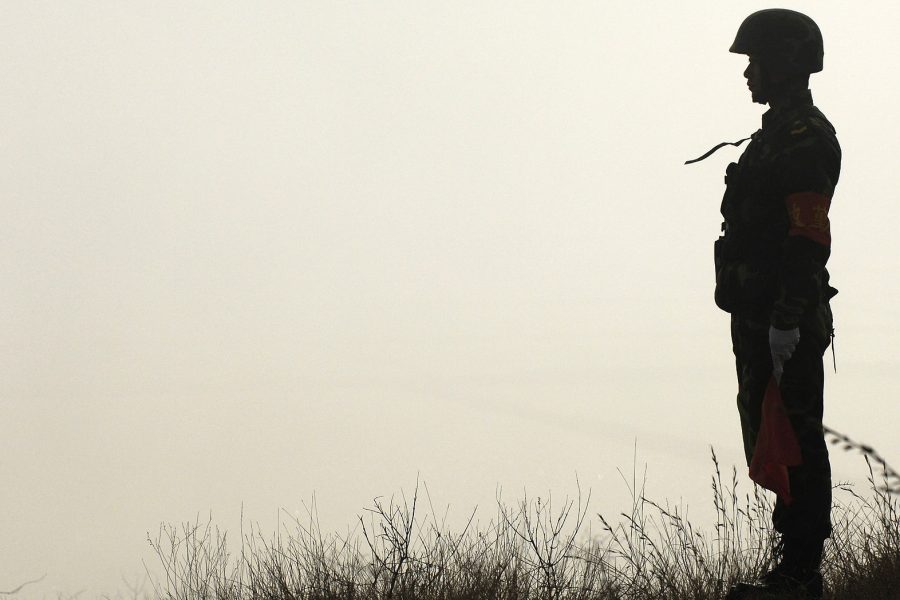While China’s military is modernizing and growing its capabilities, a leading expert said he sees no evidence that the country is on a high-end war footing or heading towards one, though the situation is much different in the low-intensity space of cyber operations and economic and political interference.
“There is ample evidence that China’s military is enhancing its preparedness, but little evidence that the national leadership intends to fight a war anytime soon,” Timothy R. Heath, senior international defense researcher at the RAND Corporation, wrote in testimony for a June 13 hearing of the U.S.-China Economic and Security Review Commission.
Heath made a distinction between military preparedness and national war preparation. The former involves buying and developing new weapons and equipment, recruiting and training troops, and other activities to make sure a military can carry out its missions.
“Military preparedness is a normal activity undertaken regardless of whether a country’s leadership believes a war is likely or not,” he explained, pointing out that the U.S. has prepared to fight a war against a great power for decades but has not actually fought one since World War II.
Heath believes a more reliable signal that a country expects conflict is whether the entire society is preparing for war. That could take the form of national defense mobilization, which involves conscription and other larger transfers of civilian resources to military use. A less intense form is what Heath calls national war preparation: policy and procedure changes in non-military domains meant to pave the way for combat operations.
The researcher grouped most reports of China’s growing military power—more ballistic missiles and more warships, for example—under military preparedness. Chinese president Xi Jinping has also pushed for combat readiness in speeches to the military. While concerning, neither of these signals should be taken as expectation of imminent conflict, cautioned Heath, who cited a 2022 Defense Post article where CIA official David Cohen said the intelligence community believed Xi’s aim is to control Taiwan “through non-military means.”
“In sum, although Chinese military modernization developments may well pose a threat to the U.S. military, they do not signal that China is carrying out (or has already initiated) national war preparations,” Heath wrote.

While Xi has criticized the U.S. and pledged to unify Taiwan with China, his statements are much the same as his predecessors’, and the “overwhelming focus” of his speeches is on socioeconomic problems such as jobs, corruption, and inequality, Heath wrote. Xi’s list of national security threats begins with “ethnic separatists, religious extremists, and violent terrorists,” organized crime, and natural disasters, with the U.S. towards the bottom of the list.
“This is not to discount the problems that China has with the United States … but there’s no evidence that I can find where he calls out for the whole nation to be prepared for war,” Heath told the commission. “Leaders that are seriously contemplating war do not shy away from naming the villain.”
That rhetoric extends to the popular media as well. While recent Chinese blockbuster war and action films feature conflict with American antagonists, such films are still “a minority of media” at a scale “orders of magnitude” smaller than the large number of anti-American films and propaganda produced during the Korean War, Heath asserted.
Likewise, while public opinion polling is sparse in an authoritarian state, the few surveys available show an “extremely small level of support for armed conflict against Taiwan,” the Chinese Communist Party’s number one threat, and “virtually no support for the idea of war with the U.S.,” nor is there evidence of any elite groups within Chinese society pushing for a war against the U.S., the researcher said.
“Without question, there is tension between the U.S. and China,” he told the commission. “But American culture and American people are not hated in China, it’s my understanding, like they were perhaps in the Cold War.”
On the economic front, China’s defense spending is “relatively modest” at under 2 percent of gross domestic product (GDP), though exact numbers are unclear. China’s defense mobilization system remains flawed by understaffed, misaligned bureaucracies, lack of standardized data, and inconsistent authorities, while China’s medical infrastructure is underprepared for wartime mass casualty events, Heath wrote, citing Chinese military medical journals and academic reports.
What Mobilization Would Look Like
While the Chinese Communist Party may seem monolithic to democratic countries, putting the party’s bureaucracy on a war footing would require a major shift for party cadres, who prioritize “peaceful development policies,” Heath said.
“Their promotion criteria, rules, regulations, indoctrination material, and political work all prioritize such measures as GDP growth, governance, and management of social stability, not war preparation,” he wrote.
“Xi may personally be more powerful than rival elites, but the Chinese state’s grip on society is far weaker than was the case in Mao Zedong’s day,” he continued. “Mao could command the populace to carry out astonishing acts of national sacrifice in such bloody campaigns as the Great Leap Forward or Cultural Revolution. By contrast, the Chinese state under Xi grapples with persistent discontent over a slowing economy, unemployment, corruption, and inadequate social welfare services.”
With a state bureaucracy built for peace and without widespread public support, “Chinese leaders face powerful disincentives and major hurdles to escalating any crisis to conflict,” Heath argued. Even if those hurdles were cleared, it would still take months to gather the food, ammunition, supplies, transportation networks, and other logistics to sustain a war footing, he said.
“The most difficult part would be the political mobilization: getting people on board with this idea that the whole country should head into war,” he told the commission. “That could be quite violent and bloody, in my opinion, because I expect a lot of people would question and challenge that.”

Devin Thorne, principal threat intelligence analyst for China geopolitics at the private intelligence company Recorded Future, agreed with Heath’s assessment that it would take months to rally Chinese infrastructure to war and that political mobilization would be a major challenge.
A Different Kind of Conflict
Commission members questioned Heath’s testimony, arguing that the shift from peace to a war footing is less a binary on-off switch and more a transition by degrees that China has been steadily building in recent years. Thorne and Heath agreed, with Thorne pointing out that Chinese leadership likely assesses that the risk of a high-end war is growing, and that fear “doesn’t just dissipate” even if they are not ready to launch a war.
Heath acknowledged that national security is becoming more of an issue in Chinese politics, but the overwhelming focus is still on national development. However, there is still plenty of room for low-intensity conflict involving cyber, economic, and political tools instead of tanks, missiles, and fighter jets.
“I worry about a different kind of conflict … and there I think the indicators are much more alarming,” he said.
Military leaders have expressed a similar concern. In September, then-Chief Master Sergeant of the Air Force JoAnne Bass warned Airmen of the perils of information warfare and artificial intelligence.
“There are armies of bots, swarms of trolls, legions of sock puppets, strategically manipulating the information that we see to achieve their own objectives,” she said. “This is unrestricted warfare and it comes with minimal to no physical force.”
Likewise, Josh Baughman, an analyst with Air University’s China Aerospace Studies Institute, said in an August paper that writers with China’s People’s Liberation Army have discussed using AI in the cognitive domain to “destroy the image of the government, change the standpoint of the people, divide society and overthrow the regime” through an overwhelming amount of fake news, videos, and other content targeting human fears and suspicions.
“That is not something years in the future, it is something they can do today,” Baughman told Air & Space Forces Magazine at the time. “And the scale that they could do it at is just unreal.”
Commissioner Michael R. Wessel questioned the distinction between high-end and low-end conflict when a cyber intrusion can have such devastating effects such as disrupting an electrical grid or disabling the cooling mechanisms at a nuclear facility. The U.S. and China are already well into a campaign of interference and provocation aimed at undermining the legitimacy of each other’s governments, Heath acknowledged.
“Both the U.S. and China frankly are too weak to risk a large-scale war, it’s too destabilizing for both countries,” he said. “But they can sustain indirect forms of conflict for a very long time, because you don’t need the public to carry out cyber operations and information operations.”
High-end conflict is still a risk, especially if a Chinese leader manages to establish a new political agenda and ready the state bureaucracy for war. Guarding against that kind of change will require careful monitoring of Chinese senior leader statements, documents, national war preparations in non-military domains, and the mood of the Chinese public, Heath said. But it also requires careful diplomacy on the part of the U.S.
“It is important, in my view, for us to balance our policy towards China to both protect our own interests, and not unnecessarily drive them in a direction of hostility that can make these trends even more alarming,” he told the commission.
